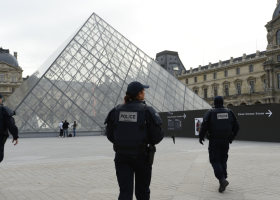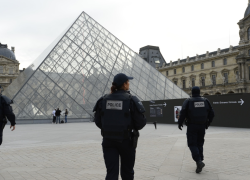-
The largest theft in the history of the Louvre gallery: Thieves escaped with treasures from the Napoleonic era

© x The famous Louvre gallery was robbed during its opening to visitors. According to French Culture Minister Rachida Dati, the robbery occurred at the very moment the museum was preparing to admit its first guests. No one was injured, but the museum was immediately closed and an intensive investigation was launched.
The perpetrators used access from the Seine embankment side, where construction work is underway, entered the building using a freight elevator and headed straight to the gallery dedicated to the jewels of Napoleon and the Empress. According to the French paper Le Parisien, it was a coordinated action by three men – two broke in and smashed the display cases, the third waited outside. They took nine valuable historical jewels from the museum, including a necklace, a brooch and a tiara. Immediately after the act they got on a TMax motorcycle and headed toward the A6 motorway.
According to reports from Parisian media and the French Ministry of Culture, thieves from the Louvre stole nine valuable items from Napoleon's and Joséphine's jewelry collection. Among the stolen pieces are a gold necklace set with gemstones, a diamond brooch, an emerald tiara and several smaller jewels that were part of the exhibition devoted to France's imperial period.
The Louvre, the most visited museum in the world, will remain closed to the public today due to “exceptional circumstances.” Among the stolen exhibits are jewels from Napoleon's collection, which have immeasurable historical and artistic value. The police have launched an extensive search, the Ministry of Culture has reorganized security measures, and increased activity by security forces is visible today in the streets around the museum.
Under normal circumstances the Louvre would be filled with thousands of tourists, but today it remains quiet and closed. Investigators are reviewing camera footage and are working intensively to identify the perpetrators. Today's robbery is already going down in history as one of the largest attacks on the world's cultural heritage in recent years.
Paris's Louvre is more than just a museum – it is the heart of world art and history. It is located in the former residence of the French kings and is one of the largest and most visited museums in the world. Millions of visitors pass through it each year, coming to admire more than 35,000 displayed exhibits out of a total of roughly half a million works.
The Louvre is unique not only in its scale but also in the diversity of its collections. On an area of over 72,000 m², artistic treasures from antiquity to the 19th century come together – from Egyptian artifacts to Renaissance masterpieces. Among the best-known exhibits are Leonardo da Vinci's Mona Lisa, the Venus de Milo, the Winged Victory of Samothrace and the Code of Hammurabi – one of the oldest legal texts of humanity.
The museum is also an architectural treasure. The palace's origins date back to the 12th century, when it was built as a fortress, later rebuilt as a royal residence and in 1793 turned into a public museum. The famous glass pyramid designed by architect I. M. Pei, which has become the iconic entrance to the gallery, represents the symbol of the modern era.
Today the Louvre embodies the connection between history, culture and the present. Its atmosphere shows that French art and spiritual heritage have a timeless power – and that even after centuries they have not lost their ability to inspire the whole world.








